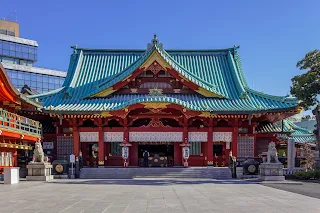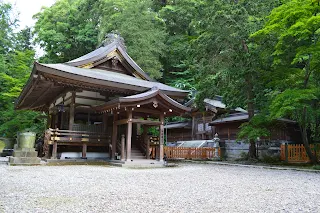Taira no Masakado was a samurai who rebelled against the imperial court in the 10th century. He was defeated and beheaded, but his head did not decay and flew back to his homeland. His grave in Tokyo is said to be haunted by his vengeful spirit, and many urban legends surround it. In this article, we will explore the history and mystery of Taira no Masakado’s grave.
Who was Taira no Masakado?
Taira no Masakado was a descendant of Emperor Kanmu and a member of the Taira clan. He was born in the early 900s and lived in the eastern provinces of Japan. He was a powerful and ambitious lord who had conflicts with his relatives and rivals over land and authority. He also had a reputation for being brave and skilled in warfare.
In 935, he started a series of rebellions against the central government in Kyoto, which was led by the Fujiwara clan. He attacked and occupied several provincial capitals, and declared himself the “New Emperor” in 939. He tried to establish an independent regime in the east, but his reign was short-lived. In 940, he was defeated and killed by a coalition of loyalist forces led by Fujiwara no Hidesato and Taira no Sadamori. His head was cut off and sent to Kyoto as a trophy.
What happened to his head?
According to legend, Masakado’s head did not rot and kept its lifelike appearance. It was displayed on a stake near a river bank in Kyoto, but it opened its eyes and gnashed its teeth. It also cried out for its body and challenged its enemies to fight again. It was said that the head was so terrifying that even birds and insects avoided it.
One night, the head flew away from the stake and soared across the sky. It landed on several places in the Kanto region, where Masakado had his supporters and followers. Some people tried to bury the head or enshrine it, but it always disappeared and reappeared somewhere else. Finally, the head settled in a marshy area in Otemachi, Tokyo, where it was buried under a mound. A shrine was built there to appease Masakado’s spirit.
Why is his grave considered cursed?
Masakado’s grave is located in the middle of Tokyo’s financial district, surrounded by skyscrapers and busy streets. It is a small and inconspicuous site, but it has a long and dark history. It is believed that Masakado’s spirit still harbors resentment and causes misfortune to those who disrespect or disturb his grave.
There are many stories of people who suffered accidents, illnesses, or deaths after being involved with Masakado’s grave. For example, in 1923, the Ministry of Finance planned to demolish the grave and build a new office building, but the project was canceled after the minister and several workers died in mysterious circumstances. In 1940, a memorial stone was erected on the grave to commemorate the 1000th anniversary of Masakado’s death, but it was destroyed by a lightning strike. In 1968, the American occupation forces tried to relocate the grave to make way for a new road, but they faced a series of protests and mishaps. In 1979, a fire broke out in a nearby building, and the only window that remained intact was the one facing the grave.
Many people believe that Masakado’s grave has a supernatural power that affects the fate of Japan. Some say that the grave is a spiritual nexus that balances the energy of the land. Others say that the grave is a symbol of resistance and independence against oppression and corruption. Some even say that the grave is a portal to another dimension or a gateway to hell.
 |
| By 菊竹若狭 |
Where are the other shrines dedicated to Masakado?
Masakado’s grave is not the only place where he is worshipped. There are several other shrines dedicated to him in Japan, especially in the areas where he had his influence and battles. Some of the most famous ones are:
- Tsukudo Shrine in Chiyoda, Tokyo. This shrine houses a portrait of Masakado that was painted by a court painter in the Heian period. It is said that the portrait has a miraculous power to protect the city from disasters and enemies. The shrine also holds an annual festival on March 25, the anniversary of Masakado’s death, where a procession of samurai warriors and priests carries the portrait around the neighborhood.
_IMG_4913-4_20180519.jpg) |
| By Ogiyoshisan |
- Kanda Shrine in Chiyoda, Tokyo. This shrine is one of the oldest and most important shrines in Tokyo. It enshrines Masakado as one of the three main deities, along with Daikokuten and Ebisu, who are both gods of wealth and prosperity. The shrine is popular among businessmen and entrepreneurs who pray for success and fortune.
 |
| By Kakidai |
- Yuki Shrine in Yuki, Ibaraki. This shrine is located in the hometown of Masakado, where he was born and raised. It enshrines Masakado as the ancestral god of the Yuki clan, which is a branch of the Taira clan. The shrine also preserves Masakado’s armor, helmet, sword, and bow, which are displayed to the public once every 12 years.
 |
| By houzyouhideyosi |
- Kanasana Shrine in Bando, Ibaraki. This shrine is located near the site where Masakado was killed in battle. It enshrines Masakado as the god of war and justice, who punishes the evil and rewards the good. The shrine also has a memorial hall that exhibits Masakado’s relics and documents.
 |
| By Saigen Jiro |
Conclusion
Taira no Masakado’s grave is a fascinating and mysterious place that reflects the history and culture of Japan. It is a testament to the legacy and legend of Masakado, who was a rebel and a hero, a villain and a god. His grave is a source of fear and awe, of respect and curiosity, of mystery and wonder. It is a place that invites us to explore the past and the present, the reality and the fantasy, the human and the divine.






No comments:
Post a Comment